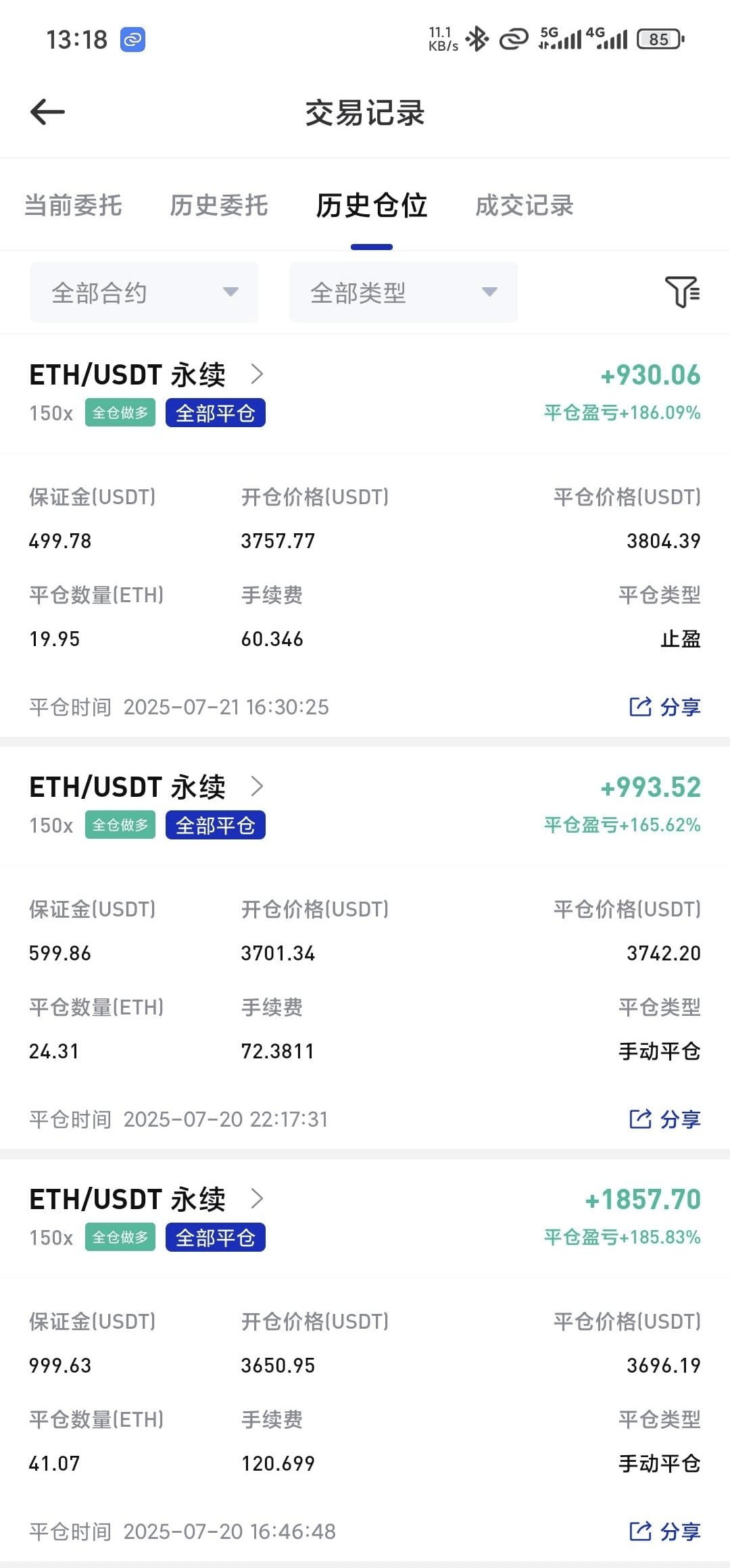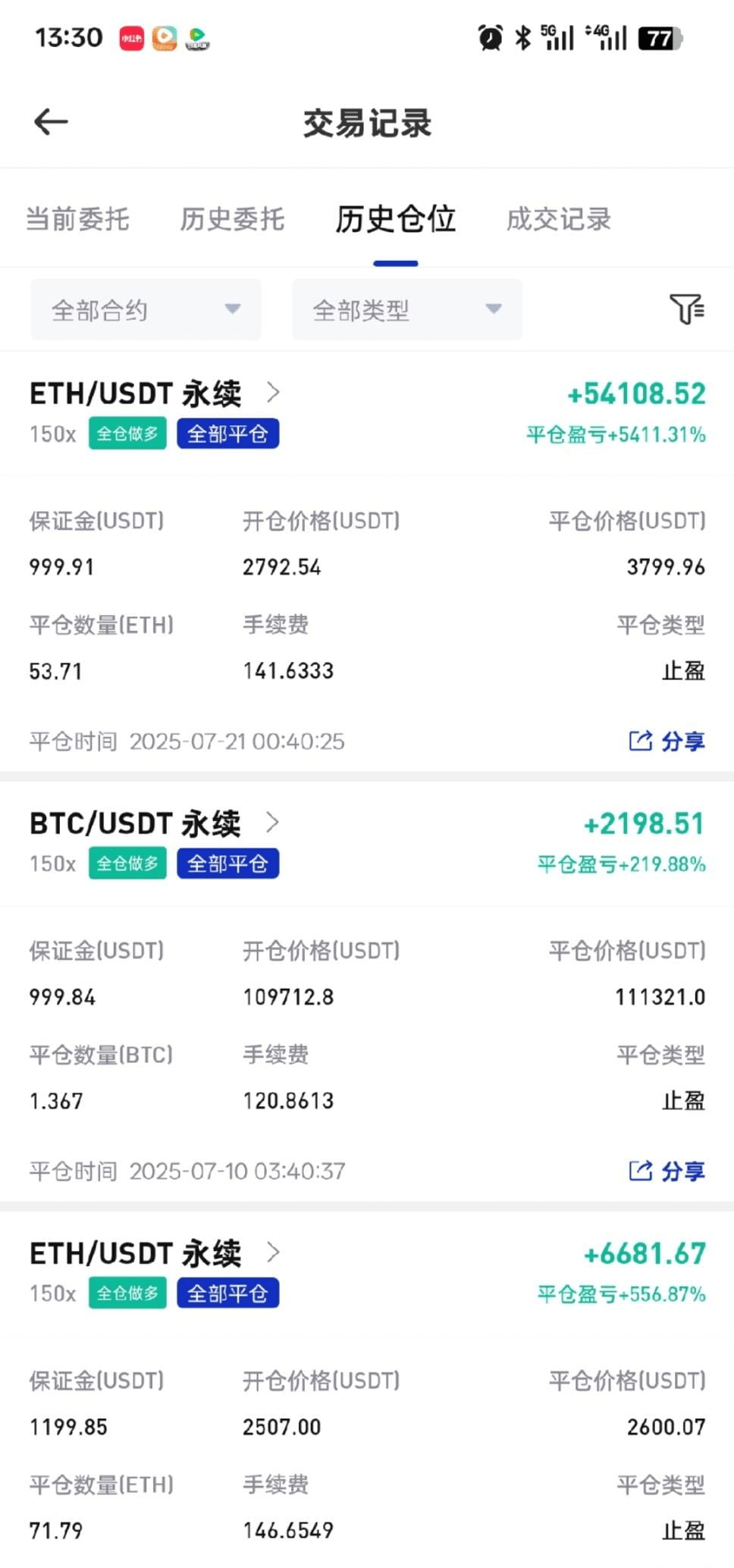I have seen someone roll from 5,000 to 1 million in half a year, and I have also seen someone make 500,000 one day and lose it all the next—it’s not a difference in luck but a stark contrast in executing the rolling strategy. After 4 years of practical experience in contracts, the pitfalls I have stepped into could fill a truck; the final summary of this strategy is encapsulated in two words: ‘guard’ and ‘ruthless’—be as steady as a mountain when you need to guard, and never hesitate when you need to be ruthless.
First, wait: 90% of the time waiting, 10% of the time earning.
Beginners in contracts always feel that ‘not trading is a loss’; they feel uncomfortable if they don’t open a position all day. But those I have seen who can make money are all ‘snipers’—90% of the time they lie still, waiting for the best moment to pull the trigger.
Last year, a fan started with 5,000, traded daily for the first three months, spending over 800 on fees, and the account still lost 30%. Later, he learned to ‘wait for the market’, only acting when BTC and ETH showed ‘violent markets’: for example, breaking through critical resistance points and increasing by more than 5%. As a result, in the fourth month, he made 40% on a single trade, equivalent to the previous three months of chaotic effort.
What is a 'violent market'? There are three signals:
Breakthrough critical points + increased volume: BTC was flat for half a month at 30,000 dollars, suddenly breaking through 32,000 dollars with trading volume three times that of the previous day—this is ‘funds scrambling for positions’, and entering at this time, there is a high probability of more than 10% volatility within three days.
News-driven trends: after major news like the Federal Reserve announces interest rate cuts or Bitcoin halving, the market often continues for a while. Last year, on the day the Federal Reserve cut rates, I waited for 2 hours to confirm the trend, then entered the market, making 30% in 5 days.
Sector linkage rise: for example, if the DeFi sector rises collectively, and leading coins rise by 10%, other coins follow—this indicates ‘it’s not just a single coin’s market, but a sector opportunity’, which is safer.
The core of waiting for the market is ‘controlling your hands’. I have a timer on my phone, forcing myself to ‘open a maximum of 2 positions a day’. Before opening a position, I must watch the K line for 15 minutes, which suppresses many impulsive orders. Remember: in the contract market, missing 10 opportunities is not scary; what’s scary is one impulsive move that wipes out your principal.
Second, roll: use profits to roll, the principal is always the ‘safety cushion’.
‘Increasing positions after making money’ is the fatal flaw of contract beginners. I once made a 50% profit on ETH, and in a moment of excitement, I put in all my principal and profits, only for the market to reverse, not only losing all my profits, but also losing 20% of my principal. It wasn't until later that I realized: the principal is ‘life’, and the profit is ‘the icing on the cake’, and they cannot be confused.

Now my operating iron rule is:
First profit, withdraw principal: with 5,000 principal, the first trade earned 1,000 (20%), immediately transfer the 5,000 principal out, and continue with only the 1,000 profit. This way, even if you lose everything later, you only lose the money made, and the principal remains intact.
Rolling with profits, step-by-step increasing positions: when profits reach 2,000 (doubled), increase the position by at most 50% (1,000); when it reaches 4,000, increase by another 50% (2,000). Always leave a ‘buffer zone’ for profits and don’t put all your eggs in one basket.
After doubling, leave a safety cushion: when profits double (for example, 1,000 becomes 2,000), immediately withdraw 30% (600) to a stablecoin wallet, and continue rolling the remaining 1,400. This 600 is the ‘safety cushion’; even if you lose later, you have 600 in hand.
Last year, there was a month when I rolled a profit of 10,000, doubled twice in the process, took out a 30% safety cushion, and even though the market corrected in the end, I still netted 12,000—many people fail to make money because they treat ‘paper profits’ as ‘real earnings’, not understanding ‘take it while you can’.
Third, adjust: the stop-loss line follows the profits, avoiding ‘roller coasters’.
‘After making 50%, move the stop-loss line up to the cost price’—this is a lesson I learned by losing 30,000.
When I first started with contracts, I always set the stop-loss line at 3% below the opening price, but once ETH pulled back from a 50% profit to a 10% profit, I didn’t act, thinking ‘it can bounce back’, only to drop to the stop-loss line, losing not only my profits but also 3%.
Now I have learned ‘dynamic adjustment of stop-losses’:
For floating profits within 50%, set the stop-loss line 3% below the opening price (regular stop-loss).
Floating profits exceed 50%, move the stop-loss line up to ‘opening price’ (cost price) to ensure ‘no loss of principal’.
Floating profits exceed 100%, move the stop-loss line up to ‘opening price + 50%’ to lock in half the profits.
Once when SOL was floating at 80%, I moved the stop-loss line up to the cost price. Later it pulled back to 2% above the cost price; I didn’t stop-loss, and it eventually rose by 50%—this preserved my profits and I didn’t miss the market. The core of this trick is ‘let profits protect themselves’; if it rises, you earn more, if it falls, you don’t lose, and your mindset stays stable.
Fourth, stop: failing to hold onto profits means earning nothing.
‘Not taking profits leads to the last empty’—this is the harsh truth of the contract market. I have seen too many people unwilling to sell when their positions are floating at 50% or 100% profits, only for the market to reverse, wiping out all profits, and even resulting in losses.
My profit-taking principle is ‘take profits in batches, take what is good’:
Floating profit of 30%, take profit at 30%: for example, entering with a profit of 10,000, after making 3,000, first sell 30% (the position corresponding to 3,000 of principal) to recover 900 profit.
Floating profit of 50%, take another 40%: for the remaining 7,000 position, earning 3,500, sell another 40%, recovering 1,400.
Floating profit of 100%, clear positions or leave 10% to bet on the market: the remaining 30% position must either be sold completely or leave 10% to gamble for higher, but never be greedy.
During last year's BTC market, I used this profit-taking method to close all positions when I had a floating profit of 120%. Even though it rose another 50% afterwards, I had already made 120%—many people always think about ‘selling at the highest point’, but end up missing even the ‘relative high point’.
The core of profit-taking is ‘accepting imperfection’. There is no god in the crypto world who can ‘sell at the highest point’; being able to take a large portion of profits during the rise already defeats 90% of people.
Why can some people roll from 5,000 to 1 million, while others lose everything after making 500,000?
The former understands ‘wait’: only act when the market is certain, lurking like a hunter; if not, then don’t act, and when you do act, ensure it hits.
The former understands ‘roll’: playing with profits, the principal is always safe, the mindset remains stable, and operations won’t deform.
The former understands ‘adjust’: dynamically adjusting stop-losses, letting profits bear risks themselves, earning more when it rises, and not losing when it falls.
The former understands ‘stop’: take profits when they are there, don’t be greedy; preserving profits is more important than pursuing ‘higher’ returns.
The latter often does not ‘wait, roll randomly, not adjust, and not stop’—when the market comes, they rush in, increase their principal when they make money, do not adjust their stop-loss, and rely on fantasies for profit-taking; it’s no surprise they lose everything.
Finally, a piece of advice for those who want to roll their way to success:
The core of the rolling strategy is not ‘how fast to make money’, but ‘how long to survive’. Rolling from 5,000 to 1 million is not about one-time huge profits but the accumulation of countless instances of ‘waiting for the right market, rolling with profits, adjusting stop-losses, and timely taking profits’.
You don’t need to become a ‘contract master’, just need to execute these details: wait when you should, roll with profits when you can, adjust when needed, and don’t be greedy when stopping. If you can do these, even if you can’t roll 200 times, at least you can survive in the crypto world, and surviving long enough will eventually lead you to your own opportunity.
The crypto market changes rapidly, but those who can make money are always those who ‘know how to control themselves’. Don’t let the market fluctuations lead you; from today, engrave every step of the rolling strategy in your mind. The next time the market comes, you will thank your present self.
 Strong recovery, asset doubling! Follow Orange East closely, layout in advance, and easily reap significant profits.
Strong recovery, asset doubling! Follow Orange East closely, layout in advance, and easily reap significant profits.
Continue to pay attention: A2Z CFX


